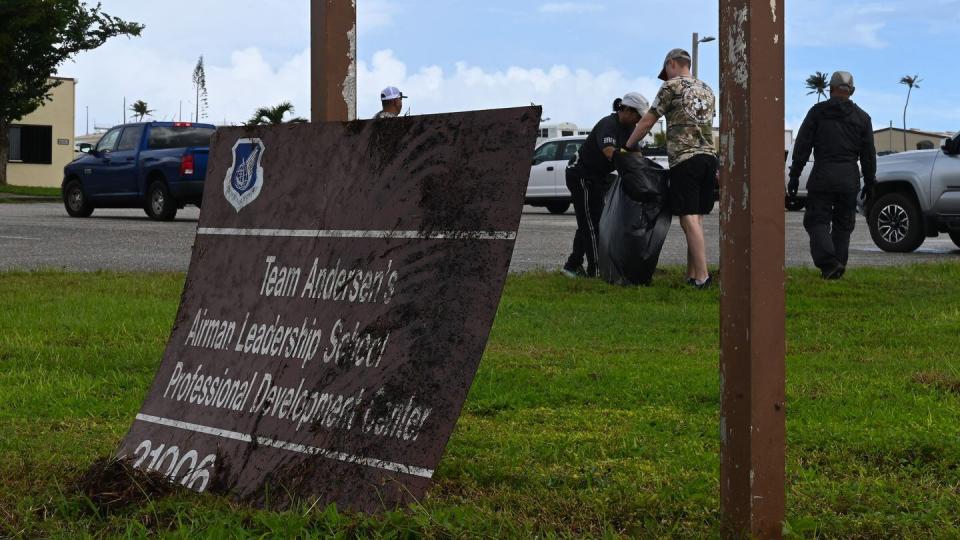House and Senate lawmakers on Friday offered a preview of this summer’s fight over defense policy changes for next year, with overall military spending and troop pay raises hanging in the balance.
Members of the Senate Armed Services Committee unveiled their draft of the massive defense authorization bill Friday morning, just as House lawmakers narrowly adopted their version of the measure, mostly along party lines in a 217-199 vote.
After the full Senate amends its committee’s draft over the next few weeks, the two chambers will begin negotiations over a compromise bill to send to the president’s desk later this year.
The legislation, which has passed Congress annually for more than 60 years, includes a host of pay authorizations, program changes and policy updates that impact almost every corner of the Defense Department. As such, the bill is closely watched by Pentagon planners and military advocates all year long, and it commands significant attention from lawmakers both on and off the military oversight committees.
Here’s a look at the major differences in the House and Senate bills, and the debates ahead.
Total defense spending
While the authorization bill doesn’t provide direct funding for military operations (the annual appropriations bill does that), the overall spending levels prescribed in the measure typically set the tone for debate over how much money the Defense Department will get next year.
In the House, that total is about $884 billion, in line with a debt ceiling agreement between the White House and Congress last summer to cap spending increases for fiscal 2025 at 1%.
The Senate authorization bill comes in at $923 billion, a 5% boost in overall defense spending, including $12.5 billion in emergency funding for military disaster recovery construction in Guam following Typhoon Mawar last year.


The roughly $25 billion extra in non-Guam funding provided in the Senate bill would allow the Defense Department to pursue several additional shipbuilding, procurement and military construction priorities.
“If you look at this bill overall, you would definitely see that the pivot to the Indo-Pacific is also a pivot to sea power, and more and more focus is going to be on the sea power investments,” Sen. Tim Kaine, D-Va., who chairs the committee’s sea power panel, told reporters after the markup.
For instance, the extra spending in the bill partially helps fund a second Virginia-class attack submarine against the Navy’s wishes; the service requested a single attack submarine for FY25 due to production delays in the industrial base. The Senate bill authorizes $1.1 billion in partial funding for the second submarine, slightly more than the House version.
The Senate bill also allows for an extra $4 billion in munitions procurement across the services, including to expand capacity for production lines for items like the Precision Strike Missile as well as the Standard Missile-2 and -6 weapons.
Another $3.1 billion would go toward military construction projects for the unfunded priorities lists submitted by various services and combatant commands.
Sen. Roger Wicker of Mississippi, the top Republican on the committee, successfully offered the amendment to increase defense spending beyond the FY25 debt ceiling caps, arguing that the U.S. needs to spend more on the military to compete with China and Russia. However, the increase was less than the extra $55 billion he initially sought for FY25.
The committee’s chairman, Sen. Jack Reed, D-R.I., voted against his panel’s authorization plan because of the high spending total. But a majority of Republicans and Democrats on the committee backed the increase in a 22-3 vote. Sens. Elizabeth Warren, D-Mass., and Tom Cotton, R-Ark., also voted against it.
Negotiating a final defense spending total will likely involve input from the White House and chamber fights over nondefense program funding, potentially complicating and lengthening the compromise process.
Junior enlisted pay raises
House lawmakers made quality of life for younger service members a major focus of their authorization bill, highlighted by a 15% average pay raise for troops E-4 and below. Supporters say the move will raise basic pay for all troops above $30,000, an adjustment meant to ensure military families aren’t facing financial strain while serving.
But the White House has strongly opposed the targeted pay boost, which could cost about $3 billion next year and more than $24 billion over the next five years, according to the Congressional Budget Office.
Administration officials back a 4.5% pay raise across the board for all troops (both the House and Senate also support that) but advised waiting on extra money for enlisted troops until next year, after a Pentagon study on military compensation is complete.


Despite including more overall defense funding in their bill, Senate lawmakers only offered an extra 1% boost for troops E-3 and below on top of the across-the-board pay raise.
That would give most junior enlisted troops a few hundred dollars extra next year, as opposed to the several thousand dollars in salary increases in the House plan. However, Senate officials also added an extra $1 billion to potentially boost junior enlisted pay even further. The committee still needs to work out the details of those pay table changes.
Sorting out which plan survives congressional negotiations could have a major impact on young military families’ finances.
And that’s not the only pocketbook issue to be discussed by negotiators. House lawmakers also backed increases to service members’ housing stipends that were omitted by Senate bill authors. And the House draft includes an expansion of the military Basic Needs Allowance, money designed to provide additional support to families struggling to cover food and household costs.
Social issues
Most of the social issues expected to cause controversy in bill negotiations this summer come from the House draft of the authorization bill.
In floor work this week, Republican lawmakers added riders ending the Pentagon’s abortion access policy for troops stationed in states where the procedure is outlawed. They also included provisions to freeze hiring for diversity jobs in the military, limit care for transgender troops, and bar discussion of “radical gender ideology” or ”critical race theory” in training sessions.
Those moves drew the ire of Democratic lawmakers in the House, many of whom backed the bill when it came out of committee but opposed it because of what they called tangential social issue fights.
Republicans did not need Democratic support to advance the bill out of the House, but will need to reach a compromise on those issues in the Democrat-controlled Senate. Similar provisions included in last year’s House drafts were ultimately stripped out by negotiators.
The Senate draft again includes a push to require women to register for the Selective Service System, currently only mandated for men aged 18 through 25. House members have opposed that idea in recent years.
